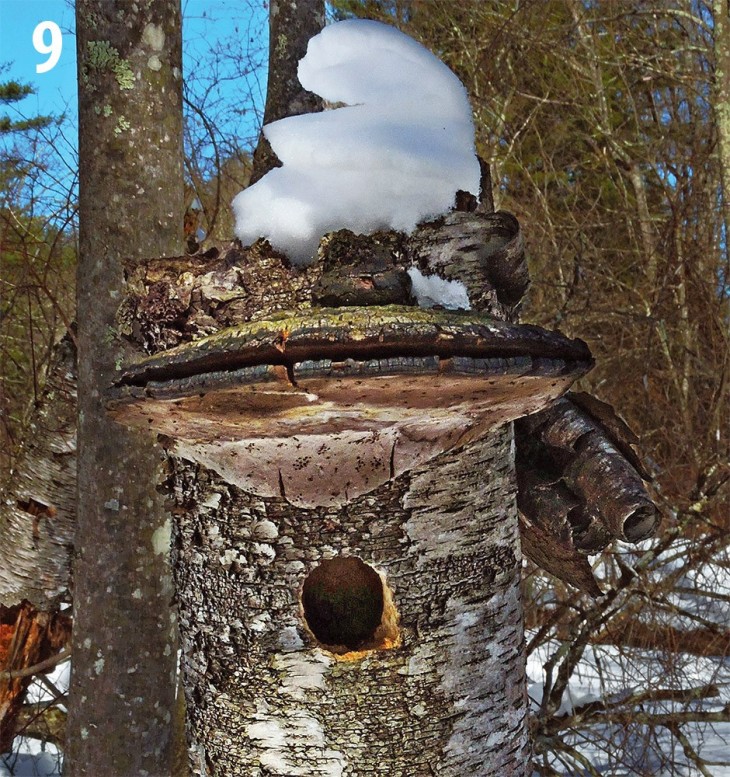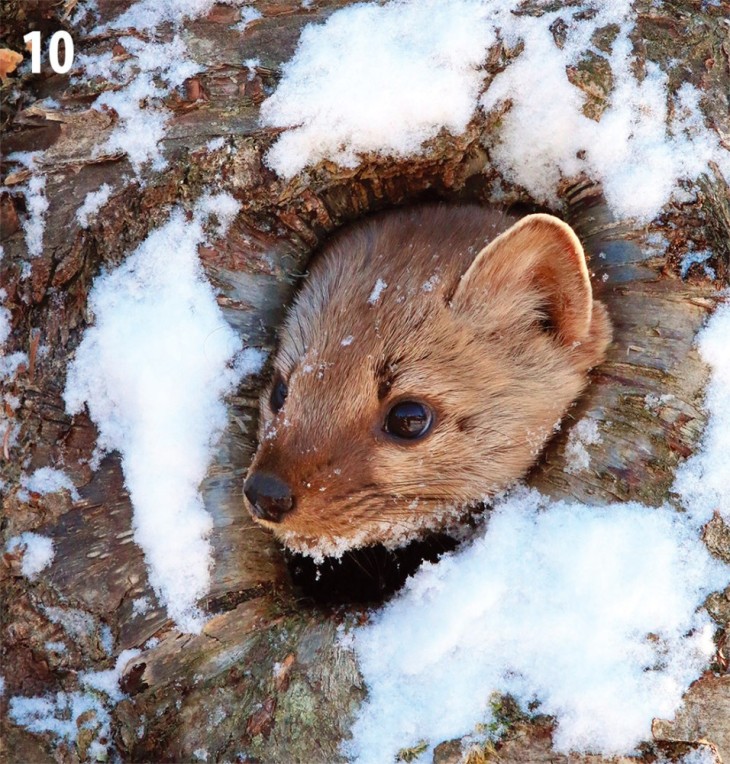Never mind the dreaded news at the dentist’s office – cavities are good! Dead, broken-topped snags full of large and small cavities aren’t worth anything at the mill. However, they may as well be full of gold if we consider the contributions they make to a healthy forest ecosystem. Those bully pines bleeding sawdust from a rotten interior, and the half-dead hunker hardwoods, hat-racked with a crown full of dead limbs, are all tireless philanthropists, even long after they’re dead.
1. Pileated woodpecker excavations. This familiar, large woodpecker uses its long chisel-like bill to excavate cavities of all sizes in search of carpenter ants, as well as to create suitable nesting and roosting habitat. A variety of common names, such as “grand pic” and “stumpbreaker,” help us appreciate this great bird.
2. Northern flicker, the most widely distributed woodpecker in North America. A flicker pair may work together for up to two weeks, excavating and preparing their nest cavity. In this photo, the male is poised at the nest’s entrance in an old open-topped snag. Snags like this are excellent nesting structures for flickers because the birds can easily remove the soft, rotten sapwood within while benefiting from the trunk’s hard outer wood that creates a secure nesting site for their family.
3. Two different examples of pileated woodpecker excavations. On the left, an older cavity is visible and has been subsequently occupied by other birds. On the right, a pileated woodpecker has recently removed the bark and drilled into the wood in search of carpenter ants.
4. Chipmunks’ winter dens are always deep in the ground below the frost line. Their burrows may be simple or quite extensive – the latter may have several entrances, passageways, and storage chambers. Summer nests, however, have been found in tree cavities, where nestlings may be safer from predators, including snakes.
5. Thick-walled cavities deep within the punky interior of old trees provide excellent insulated nest spaces for nocturnal flying squirrels. The squirrels inside also keep warm by clutching one another and curling up into an energy-saving mass of bodies.
6. Fresh bark removal and minute teeth marks are evidence that a red squirrel recently used this old pileated woodpecker cavity. By biting the outer surface of the nest’s opening, the squirrel is scent-marking and proclaiming its ownership of the hole.
7. Narrow crevices like this one are used by long-eared bats. Females gather to form maternity colonies within these cavities; scientists have documented a single maternity colony using up to 42 different roost trees in a single year. Northern long-eared bats are federally listed as threatened due to mortality associated with white-nose syndrome. Woodlot owners and forest managers can help: Preserving existing and potential cavity trees has never been more important.
8. Black bears in our region will often dig into standing snags in search of ant colonies, wood borers, beetles, and their larvae. Bears will also tear into smaller cavities seeking the larvae and pupae of honeybees sheltered therein. Reseachers have learned that where old-growth trees are abundant, bears prefer to den in above-ground cavities for the winter. Such cavities are drier and more secure from predators and human-caused disturbance.
9. With their sharp beaks, chickadees often excavate cavities in the punky wood of small dead or dying rotten birch branches and trunks. The intact birch bark provides a supportive structure for the nest, while the soft interior wood is easily excavated and discarded piece by piece. The nests are often lined with fur – including my dog Nuna’s shed hair, which I comb out and carefully put aside for songbirds.
10. This house-cat-sized member of the weasel family is a great climber and regular occupant of cavities, especially during the coldest winter months. A marten’s hind legs can be rotated, allowing the mustelid to descend a tree headfirst, just like a squirrel. Martens also depend upon fallen cavity trees to provide still more denning and resting habitat, as well as access to prey hidden beneath these structures under the snow.
11. When a cavity tree falls in the forest…it provides resting and denning shelter, as well as access to prey. Gray foxes are known to occasionally use cavities in standing trees, but their dens are more frequently found in hollow logs that provide greater warmth for the pups, which are born hairless.













